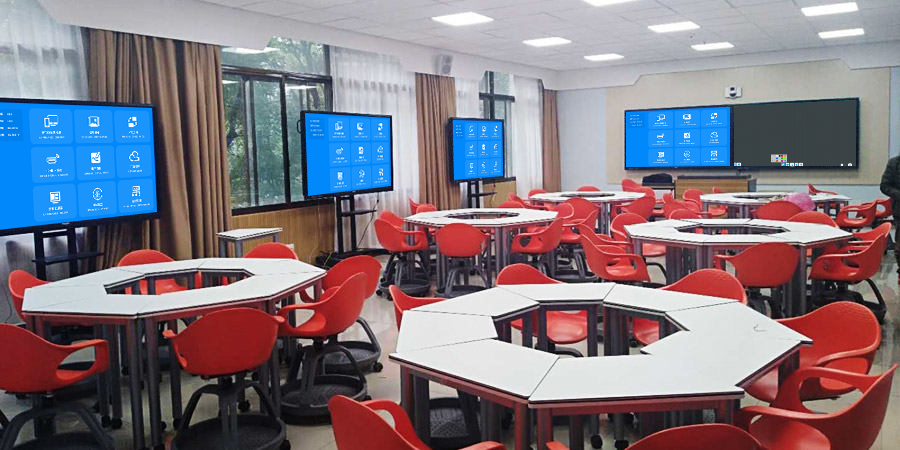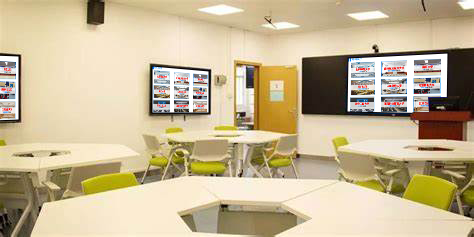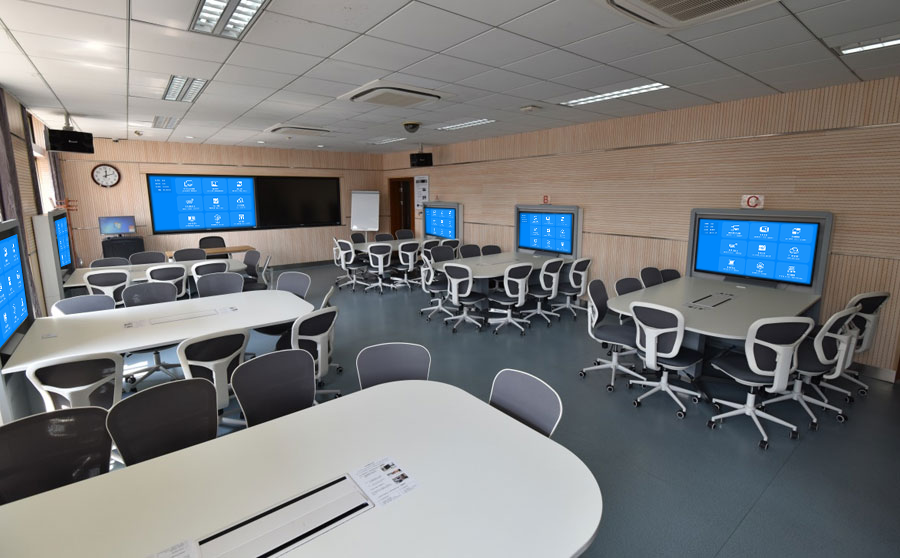Smart Classrooms: Making Every Lesson Spark with Interaction
When chalk dust no longer flies and blackboards are replaced by high-definition displays, education is being redefined by smart classrooms. They aren’t just a collection of devices; they use technology to break through the temporal and spatial limits of “teaching” and “learning,” transforming knowledge transfer from “One-way indoctrination” into “Two-way rush.”
I. Devices That “Speak,” Classrooms Bid Farewell to “Tangled Wires”
When the bell rings, the teacher walks in, taps their phone gently on the podium’s sensor, and the lesson’s PPT is already projected onto the 5-meter-wide main display. In the back, a student holds up a tablet, and their problem-solving steps instantly appear on a group screen. The teacher walks over, circles key steps with an e-pen, and the modifications sync back to the student’s device – this isn’t science fiction, it’s everyday life in a smart classroom.
Full-device wireless interconnection is the core capability: AirPlay for iOS, Miracast for Android, and Windows mirroring protocols are all fully compatible. Whether it’s an old projector or the latest meeting panel, all can join this “teaching network.” In a classroom of 60 students, 8 groups can simultaneously mirror their discussion results without any lag when switching. The teacher’s phone, computer, and interactive whiteboard seamlessly link, allowing them to effortlessly swipe the large screen to flip through courseware, no longer confined to the podium.
II. Interaction With “Warmth,” Every Student Is Seen
In traditional classrooms, “raising hands to answer” often makes introverted students retreat. Smart classrooms, however, make interaction accessible to all:
- Answering feels as natural as “using your phone”: The teacher initiates an in-class quiz. Students tap options or handwrite formulas on their tablets, and within 30 seconds, the entire class’s answer data is summarized on the main display, with accuracy rates and error distributions clear at a glance. A math teacher can immediately see that 60% of students are stuck on the same geometry problem, then instantly bring up an animated solution for targeted explanation.
- Annotations make ideas “visual”: During a Chinese language class analyzing a text, students use different colored e-pens to annotate questions on the mirrored paragraphs. All annotations appear on the large screen in real-time, and the teacher can click on a student’s annotation to start a discussion. Thoughts once hidden on scratch paper now become shared intellectual threads for the whole class.
- Group discussions are “not crowded”: Each group’s dedicated screen can receive materials pushed by the teacher and also push their results to the main screen with one tap. In a science class, one group might mirror an experimental video, while another mirrors data charts. When the whole class compares and analyzes, the main display shows both in split-screen, making the clash of ideas more intuitive.
III. Data That “Reviews,” Teaching from “Experience” to “Evidence-Based”
The end-of-class bell isn’t the end; it’s the beginning of teaching consolidation:
- Classroom data is automatically archived: Students’ answer records, annotation traces, and group discussion durations are organized by the system into “learning reports.” Teachers can see who repeatedly makes mistakes on which knowledge points and whose participation is below the class average, allowing for more precise guidance the next day.
- Resource library “comes alive”: Annotated courseware, excellent student assignments, and classroom recordings are automatically saved to the cloud, categorized by “subject – chapter.” New teachers can access past classroom materials to quickly get up to speed. When students review, they can scan a QR code to re-watch key segments with teacher explanations.

IV. Scenarios That “Adapt,” Usable from Kindergarten to University
A smart classroom isn’t a “one-size-fits-all” standardized product; it can “transform” to meet teaching needs:
- Kindergarten Classrooms: Interactive animations appear on the large screen. Young children use tablets to tap on animals to learn counting. If they accidentally tap something wrong, the system plays an encouraging sound effect, making learning as fun as a game.
- Middle School Labs: Students can film experiment processes with their phones and mirror them. The teacher can annotate key operational points on the large screen, and parents observing remotely can watch their child’s experimental performance via live stream.
- University Lecture Halls: Students in the back can “raise a hand” with their phones, and their anonymous questions appear on the large screen. The teacher can project and compare excerpts from previous students’ excellent papers, leading to more in-depth academic discussions.
In a smart classroom, technology isn’t the main character; it’s an invisible “teaching assistant.” It frees teachers from the fatigue of blackboard writing, allowing them to focus more energy on each student’s gaze. It empowers students to move beyond passive listening, daring to showcase their own thinking. When knowledge transfer becomes warmer, more responsive, and leaves traces, the classroom truly becomes fertile ground for growing wisdom.